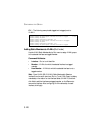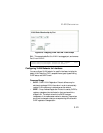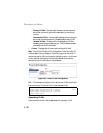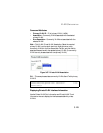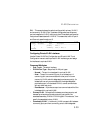
VLAN C
ONFIGURATION
3-145
Configuring Private VLANs
Private VLANs provide port-based security and isolation between ports
within the assigned VLAN. This switch supports two types of private
VLANs: primary/secondary associated groups, and stand-alone isolated
VLANs. A primary VLAN contains promiscuous ports that can
communicate with all other ports in the private VLAN group, while a
secondary (or community) VLAN contains community ports that can
only communicate with other hosts within the secondary VLAN and with
any of the promiscuous ports in the associated primary VLAN. Isolated
VLANs, on the other hand, consist a single stand-alone VLAN that
contains one promiscuous port and one or more isolated (or host) ports.
In all cases, the promiscuous ports are designed to provide open access to
an external network such as the Internet, while the community or isolated
ports provide restricted access to local users.
Multiple primary VLANs can be configured on this switch, and multiple
community VLANs can be associated with each primary VLAN. One or
more isolated VLANs can also be configured. (Note that private VLANs
and normal VLANs can exist simultaneously within the same switch.)
To configure primary/secondary associated groups, follow these steps:
1. Use the Private VLAN Configuration menu to designate one or more
community VLANs, and the primary VLAN that will channel traffic
outside of the VLAN groups.
2. Use the Private VLAN Association menu to map the secondary (i.e.,
community) VLAN(s) to the primary VLAN.
3. Use the Private VLAN Port Configuration menu to set the port type to
promiscuous (i.e., having access to all ports in the primary VLAN), or
host (i.e., having access restricted to community VLAN members, and
channeling all other traffic through promiscuous ports). Then assign
any promiscuous ports to a primary VLAN and any host ports a
community VLAN.






